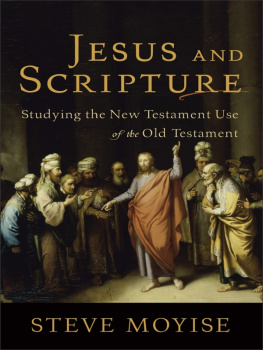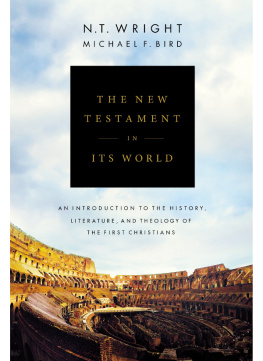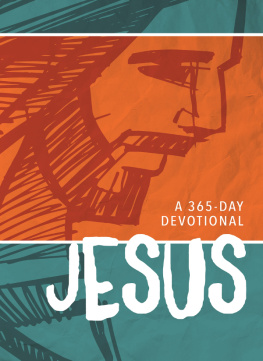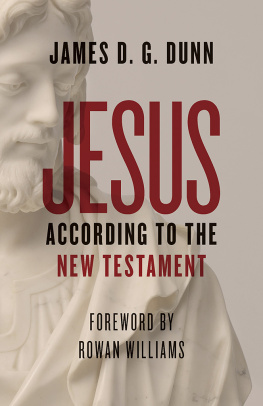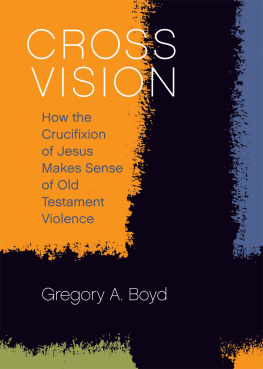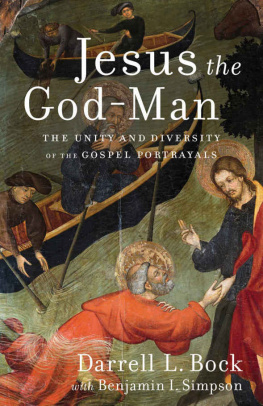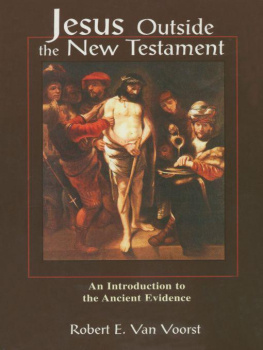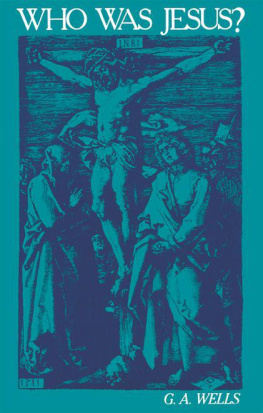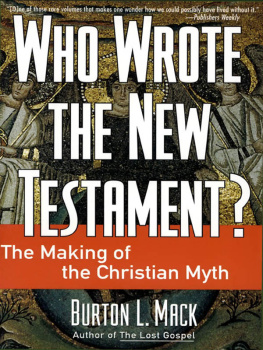Steve Moyise - Jesus and Scripture: Studying the New Testament Use of the Old Testament
Here you can read online Steve Moyise - Jesus and Scripture: Studying the New Testament Use of the Old Testament full text of the book (entire story) in english for free. Download pdf and epub, get meaning, cover and reviews about this ebook. year: 2011, publisher: Baker Publishing Group, genre: Religion. Description of the work, (preface) as well as reviews are available. Best literature library LitArk.com created for fans of good reading and offers a wide selection of genres:
Romance novel
Science fiction
Adventure
Detective
Science
History
Home and family
Prose
Art
Politics
Computer
Non-fiction
Religion
Business
Children
Humor
Choose a favorite category and find really read worthwhile books. Enjoy immersion in the world of imagination, feel the emotions of the characters or learn something new for yourself, make an fascinating discovery.
- Book:Jesus and Scripture: Studying the New Testament Use of the Old Testament
- Author:
- Publisher:Baker Publishing Group
- Genre:
- Year:2011
- Rating:5 / 5
- Favourites:Add to favourites
- Your mark:
- 100
- 1
- 2
- 3
- 4
- 5
Jesus and Scripture: Studying the New Testament Use of the Old Testament: summary, description and annotation
We offer to read an annotation, description, summary or preface (depends on what the author of the book "Jesus and Scripture: Studying the New Testament Use of the Old Testament" wrote himself). If you haven't found the necessary information about the book — write in the comments, we will try to find it.
Steve Moyise: author's other books
Who wrote Jesus and Scripture: Studying the New Testament Use of the Old Testament? Find out the surname, the name of the author of the book and a list of all author's works by series.
Jesus and Scripture: Studying the New Testament Use of the Old Testament — read online for free the complete book (whole text) full work
Below is the text of the book, divided by pages. System saving the place of the last page read, allows you to conveniently read the book "Jesus and Scripture: Studying the New Testament Use of the Old Testament" online for free, without having to search again every time where you left off. Put a bookmark, and you can go to the page where you finished reading at any time.
Font size:
Interval:
Bookmark:
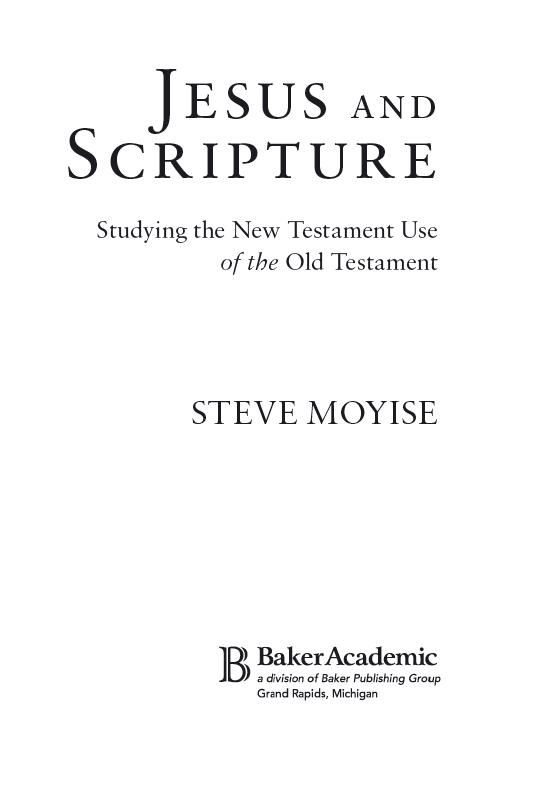
2010 by Steve Moyise
Published in 2011 by Baker Academic
a division of Baker Publishing Group
P.O. Box 6287, Grand Rapids, MI 49516-6287
www.bakeracademic.com
Originally published in 2010 by Society for Promoting Christian Knowledge, London, United Kingdom
Ebook edition created 2011
All rights reserved. No part of this publication may be reproduced, stored in a retrieval system, or transmitted in any form or by any meansfor example, electronic, photocopy, recordingwithout the prior written permission of the publisher. The only exception is brief quotations in printed reviews.
ISBN 978-1-4412-3749-1
The Library of Congress Cataloging-in-Publication Data is on file at the Library of Congress, Washington, DC.
Unless otherwise noted, Scripture quotations are taken from the New Revised Standard Version of the Bible, Anglicized Edition, copyright 1989, 1995 by the Division of Christian Education of the National Council of the Churches of Christ in the USA. Used by permission. All rights reserved.
| CD | Damascus Document |
| ConBNT | Coniectanea biblica, New Testament Series |
| JSNT | Journal for the Study of the New Testament |
| JSNTSup | Journal for the Study of the New Testament, Supplement Series |
| JSOTSup | Journal for the Study of the Old Testament, Supplement Series |
| KJV | King James Version |
| LXX | Septuagint (Greek translation) |
| m. | Mishnah |
| NETS | New English Translation of the Septuagint |
| NIGTC | New International Greek Testament Commentary |
| NIV | New International Version |
| NJB | New Jerusalem Bible |
| NovT | Novum Testamentum |
| NovTSup | Novum Testamentum, Supplements |
| NRSV | New Revised Standard Version |
| NTS | New Testament Studies |
| RSV | Revised Standard Version |
| SNTSMS | Society for New Testament Studies Monograph Series |
| WUNT | Wissenschaftliche Untersuchungen zum Neuen Testament |
Jesus was a Jew, and like other Jews he was brought up to believe that the Scriptures of Israel were not simply human wisdom but a gift from God. Tradition held that Moses ascended Mount Sinai and brought back the Ten Commandments, along with a host of other laws now recorded in the Torah (Hebrew name) or Pentateuch (Greek name). We know the books as Genesis, Exodus, Leviticus, Numbers and Deuteronomy, and together they formed the foundation of Jewish life. Christians are inclined to think of the numerous laws as a burden, but the Jews thought otherwise: The law of the LORD is perfect, reviving the soul; the decrees of the LORD are sure, making wise the simple; the precepts of the LORD are right, rejoicing the heart; the commandment of the LORD is clear, enlightening the eyes (Ps. 19.78). There are verses in the Gospels where Jesus expresses a similar view (Matt. 5.1719; Mark 7.913).
Along with the Torah, or law, Jewish tradition recognized a second group of writings, known as the prophets. This was divided into the former prophets (Joshua, Judges, Samuel, Kings) and the latter prophets (Isaiah, Jeremiah, Ezekiel, the Twelve). In many ways these books were regarded as commentary on the law, either telling the story of Israel and its relationship with the law (the covenant), or speaking out when Israel or (more often) its leaders were failing to keep it. It was because of such failures that the prophets began to speak of a new age when righteousness and justice would prevail (Isa. 1.2627). Such hopes were diverse, some pointing to a glorious future for Israel (Isa. 60.1922), some to universal peace (Isa. 11.19) and others to a completely new heaven and earth (Isa. 65.17). Scripture was often referred to as the law and the prophets.
A third group was simply known as the writings. Many of the books are what we would call wisdom (Proverbs, Job, Ecclesiastes), but the most important book was Psalms. The fact that it is divided into five books (141, 4272, 7389, 90106, 107150) like the five books of Moses is indicative of its importance for Israel. Not only does it contain hymns and laments for public worship, it also provides the language of private prayer. It is widely quoted throughout the New Testament and, as we shall see, was particularly important for Jesus. The writings also contains books like Ruth and Daniel, which later collections (like the Greek Bible) would place after Judges and Ezekiel respectively. Many scholars believe this third section was still in a state of flux at the time of Jesus, and it is interesting that Luke ends his Gospel with Jesus declaring: These are my words that I spoke to you while I was still with youthat everything written about me in the law of Moses, the prophets, and the psalms must be fulfilled (Luke 24.44). It is possible that psalms here stands for writings (as its prominent member), but it may equally suggest that the third section of the Hebrew Bible was yet to be finalized.
The Jews of Jesus day spoke Aramaic, but nearly all of these books were written in Hebrew. Thus when the Scriptures were read in the synagogues there was a need to translate them into Aramaic, and the name given to these translations was Targum (plural Targumim). Most of the Targumim that have come down to us are from a much later period, and it used to be thought that they were only known in oral form in Jesus day. However, we have now found fragments of Targumim among the Dead Sea Scrolls (Leviticus and Job), proving that at least some of them were written documents in the first century CE. What is interesting about this is that when we compare these Aramaic translations with the Hebrew texts, they are more like paraphrases than literal translations. For example, the first phrase of Genesis 2.7 (the LORD God formed man from the dust of the ground) has been greatly expanded in Targum Pseudo-Jonathan to: And the Lord God created man in two formations; and took dust from the place of the house of the sanctuary, and from the four winds of the world, and mixed from all the waters of the world, and created him red, black and white. Although there are no examples in the Gospels of Jesus quoting such expansions, there is evidence that he was sometimes influenced by their wording.
However, of much greater significance for our study is the fact that the principal sources for our knowledge of Jesus (Matthew, Mark, Luke and John) were written in Greek, including the sayings of Jesus (with a few exceptions like ephphatha in Mark 7.34 and talitha cum in Mark 5.41, where the Aramaic has been preserved). At some point in the transmission of Jesus sayings they were translated into Greek, including his quotations from Scripture. Now this presents a particular difficulty because the Hebrew Scriptures had already been translated into Greek, a version known as the Septuagint (often abbreviated to LXX, a usage we shall follow throughout this book),[]
New English Translation of theLXX(NETS)
There have until very recently been only two translations of the LXX into English, those of the American scholar Charles Thomson (1808) and the English cleric Sir Lancelot Brenton (1844). But in 2007 a group of scholars used the latest manuscript evidence to produce NETS. This is an extremely useful resource for two reasons. First, each book or section of the LXX is introduced by a short essay on the characteristics of its original translator. Second, it has adopted the strategy of conforming the translation to the NRSV whenever the Greek and Hebrew are close, and departing from it when they are not. Thus the English reader can compare the NRSVwhich is a translation of the Hebrew textand NETS and get some impression of the similarities and differences between the Greek and Hebrew versions, and of the effect of these on the meaning of the text. For example, the Hebrew of Isaiah 29.13 makes the following accusation of Israel: their worship of me is a human commandment learned by rote. The LXX has rendered this: in vain do they worship me, teaching human precepts and teachings, and this is the form quoted in Mark 7.67.
Next pageFont size:
Interval:
Bookmark:
Similar books «Jesus and Scripture: Studying the New Testament Use of the Old Testament»
Look at similar books to Jesus and Scripture: Studying the New Testament Use of the Old Testament. We have selected literature similar in name and meaning in the hope of providing readers with more options to find new, interesting, not yet read works.
Discussion, reviews of the book Jesus and Scripture: Studying the New Testament Use of the Old Testament and just readers' own opinions. Leave your comments, write what you think about the work, its meaning or the main characters. Specify what exactly you liked and what you didn't like, and why you think so.

